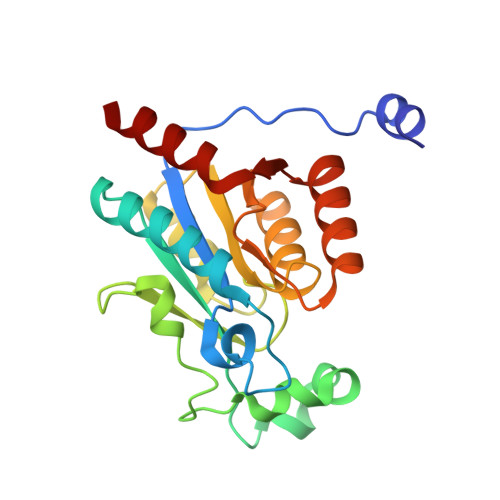Structural insights into the specific recognition of N-heterocycle biodenitrogenation-derived substrates by microbial amide hydrolases.
Wu, G., Chen, D., Tang, H., Ren, Y., Chen, Q., Lv, Y., Zhang, Z., Zhao, Y.L., Yao, Y., Xu, P.(2014) Mol Microbiol 91: 1009-1021
- PubMed: 24397579
- DOI: https://doi.org/10.1111/mmi.12511
- Primary Citation of Related Structures:
4L07, 4L08 - PubMed Abstract:
N-heterocyclic compounds from industrial wastes, including nicotine, are environmental pollutants or toxicants responsible for a variety of health problems. Microbial biodegradation is an attractive strategy for the removal of N-heterocyclic pollutants, during which carbon-nitrogen bonds in N-heterocycles are converted to amide bonds and subsequently severed by amide hydrolases. Previous studies have failed to clarify the molecular mechanism through which amide hydrolases selectively recognize diverse amide substrates and complete the biodenitrogenation process. In this study, structural, computational and enzymatic analyses showed how the N-formylmaleamate deformylase Nfo and the maleamate amidase Ami, two pivotal amide hydrolases in the nicotine catabolic pathway of Pseudomonas putida S16, specifically recognize their respective substrates. In addition, comparison of the α-β-α groups of amidases, which include Ami, pinpointed several subgroup-characteristic residues differentiating the two classes of amide substrates as containing either carboxylate groups or aromatic rings. Furthermore, this study reveals the molecular mechanism through which the specially tailored active sites of deformylases and amidases selectively recognize their unique substrates. Our work thus provides a thorough elucidation of the molecular mechanism through which amide hydrolases accomplish substrate-specific recognition in the microbial N-heterocycles biodenitrogenation pathway.
- State Key Laboratory of Microbial Metabolism, School of Life Sciences & Biotechnology, Shanghai Jiao Tong University, Shanghai, China.
Organizational Affiliation:

















